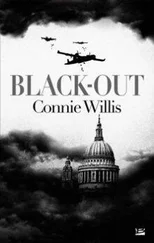Connie Willis - Bellwether
Здесь есть возможность читать онлайн «Connie Willis - Bellwether» весь текст электронной книги совершенно бесплатно (целиком полную версию без сокращений). В некоторых случаях можно слушать аудио, скачать через торрент в формате fb2 и присутствует краткое содержание. Год выпуска: 1996, ISBN: 1996, Издательство: Bantam Spectra, Жанр: Фантастика и фэнтези, на английском языке. Описание произведения, (предисловие) а так же отзывы посетителей доступны на портале библиотеки ЛибКат.
- Название:Bellwether
- Автор:
- Издательство:Bantam Spectra
- Жанр:
- Год:1996
- ISBN:0-553-37562-8
- Рейтинг книги:3 / 5. Голосов: 1
-
Избранное:Добавить в избранное
- Отзывы:
-
Ваша оценка:
- 60
- 1
- 2
- 3
- 4
- 5
Bellwether: краткое содержание, описание и аннотация
Предлагаем к чтению аннотацию, описание, краткое содержание или предисловие (зависит от того, что написал сам автор книги «Bellwether»). Если вы не нашли необходимую информацию о книге — напишите в комментариях, мы постараемся отыскать её.
Nominated for Nebula Award for Best Novel in 1998.
Bellwether — читать онлайн бесплатно полную книгу (весь текст) целиком
Ниже представлен текст книги, разбитый по страницам. Система сохранения места последней прочитанной страницы, позволяет с удобством читать онлайн бесплатно книгу «Bellwether», без необходимости каждый раз заново искать на чём Вы остановились. Поставьте закладку, и сможете в любой момент перейти на страницу, на которой закончили чтение.
Интервал:
Закладка:
Sarah, over in Chem, would love to hear that.
“I’ve never seen one before,” I said. “What does the i stand for?”
She looked confused. “Stand for? It doesn’t stand for anything. It’s I. You know, me. Who I am. It’s a personal statement.”
I decided not to ask her why her brand was lowercase, or if it had occurred to her that anyone seeing her with it would immediately assume it stood for incompetent.
“It’s ‘I,’ ” she said. “A person who doesn’t need anybody else, especially not a swarb who would sit at the communal table and order Sumatra.” She sighed deeply.
The waiter brought our lattes in Alice-in-Wonderland-sized cups, which might be a trend but was probably just a practical adjustment. Pouring steaming liquids into clear glass can have disastrous results.
Flip sighed again, a huge sigh, and licked the foam despondently off the back of her long-handled spoon.
“Do you ever feel com plete ly itch?”
Since I had no idea what itch was, I licked the back of my own spoon and hoped the question was rhetorical.
It was. “I mean, like take today. Here it is, the weekend, and I’m stuck sitting here with you.” Here she rolled her eyes and sighed again. “Guys suck, you know.”
By which I took it she meant Brine, of the bower boots and assorted studs.
“ Life sucks. You say to yourself, What am I doing in my job?”
Not much, I thought.
“So, everything sucks. You’re not going anywhere, you’re not accomplishing anything. I’m twenty-two!” She ate a spoonful of foam. “Like, why can’t I ever meet a guy who isn’t a swarb?”
It might be the forehead tattoo, I thought, and then remembered I wasn’t any better off than Flip.
“It’s just like Groupthink says.” She looked at me expectantly, and then expelled so much air I thought she was going to deflate. “How can you not know about Groupthink? They’re the most in band in Seattle. It’s like their song says, ‘Spinning my wheels on the launchpad, spitting I dunno and itch.’ This is too bumming,” she said, glaring at me like it was my fault. “I gotta get out of here.”
She snatched up her check and slouched off through the crowd toward our waiter.
After a minute he came over and handed the check to me. “Your friend said you’d pay this,” he said. “She said to tip me twenty percent.”
Alice blue [1902–4]
Color fad inspired by President Teddy Roosevelt’s pretty and vivacious teenage daughter, of whom her father once said, “I can be President of the United States, or I can control Alice. I cannot possibly do both.” Alice Roosevelt was one of the first “media stars”; her every move, comment, and outfit was copied by an eager public. When a dress was designed for her to match her gray-blue eyes, reporters dubbed it Alice blue, and the color became instantly popular. The musical comedy Irene featured a song called “Alice Blue Gown,” shops marketed gray-blue fabric, hats, and hair ribbons, and hundreds of babies were named Alice and dressed not in the traditional pink but in Alice blue.
After Flip left I went back to the personals, but they seemed sad and a little desperate: “Lonely SWF seeks someone who really understands.”
I wandered down the mall, looking at fairy T-shirts, fairy pillows, fairy soaps, and a cologne in a flower-shaped bottle called Elfmaiden. The Paper Doll had fairy greeting cards, fairy calendars, and fairy wrapping paper. The Peppercorn had a fairy teapot. The Quilted Unicorn, combining several trends, featured a caffè latte cup painted with a fairy dressed as a violet.
The sun had disappeared, and the day had turned gray and chilly. It looked as if it might even start to snow. I walked down past the Latte Lenya to the Fashion Front and went in to get warm and to see what color postmodern pink was.
Color fads are usually the result of a technological breakthrough. Mauve and turquoise, the colors of the 1870s, were brought about by a scientific breakthrough in the manufacture of dyes. So were the Day-Glo colors of the 1960s. And the new jewel-tone maroon and emerald car colors.
The fact that new colors are few and far between has never stopped fashion designers, though. They just give a new name to an old color. Like Schiaparelli’s “shocking” pink in the 1920s, and Chanel’s “beige” for what had previously been a nondescript tan. Or name a color after somebody, whether they wore it or not, like Victoria blue, Victoria green, Victoria red, and the ever-popular, and a lot more logical, Victoria black.
The clerk in the Fashion Front was talking on the phone to her boyfriend and examining her split ends. “Do you have postmodern pink?” I said.
“Yeah,” she said belligerently, and turned back to the phone. “I have to go wait on this woman,” she said, slammed the phone down, and slouched over to the racks.
It is a fad, I thought, following her. Flip is a fad.
She shoved past a counter full of angel sweatshirts marked seventy-five percent off, and gestured at the rack. “And it’s po-mo pink,” she said, rolling her eyes. “Not postmodern.”
“It’s supposed to be the hot color for fall,” I said.
“Whatever,” she said, and slouched back to the phone while I examined “the hottest new color to hit since the sixties.”
It wasn’t new. It had been called ashes-of-roses the first time around in 1928 and dove pink the second in 1954.
Both times it had been a grim, grayish pink that washed out skin and hair, which hadn’t stopped it from being hugely popular. It no doubt would be again in its present incarnation as po-mo pink.
It wasn’t as good a name as ashes-of-roses, but names don’t have to be enticing to be faddish. Witness flea, the winning color of 1776. And the hit of Louis XVI’s court had been, I’m not kidding, puce. And not just plain puce. It had been so popular it’d come in a whole variety of appetizing shades: young puce, old puce, puce-belly, puce-thigh, and puce-with-milk-fever.
I bought a three-foot-long piece of po-mo pink ribbon to take back to the lab, which meant the clerk had to get off the phone again. “This is for hair wraps,” she said, looking disapprovingly at my short hair, and gave me the wrong change.
“Do you like po-mo pink?” I asked her.
She sighed. “It’s the boss color for fall.”
Of course. And therein lay the secret to all fads: the herd instinct. People wanted to look like everybody else. That was why they bought white bucks and pedal pushers and bikinis. But someone had to be the first one to wear platform shoes, to bob their hair, and that took the opposite of herd instinct.
I put my incorrect change and my ribbon in my shoulder bag (very passé) and went back out onto the mall. It had started to spit snow and the street musicians were shivering in their Birkenstocks and Ecuador shirts. I put on my mittens (com plete ly swarb) and walked back down toward the library, looking at yuppie shops and bagel stands and getting more and more depressed. I had no idea where any of these fads came from, even po-mo pink, which some fashion designer had come up with. But the fashion designer couldn’t make people buy po-mo pink, couldn’t make them wear it and make jokes about it and write editorials on the subject of “What is fashion coming to?”
The fashion designers could make it popular this season, especially since nobody would be able to find anything else in the stores, but they couldn’t make it a fad. In 1971, they’d tried to introduce the long midi-skirt and failed utterly, and they’d been predicting the “comeback of the hat” for years to no avail. It took more than merchandising to make a fad, and I didn’t have any idea what that something more was.
Читать дальшеИнтервал:
Закладка:
Похожие книги на «Bellwether»
Представляем Вашему вниманию похожие книги на «Bellwether» списком для выбора. Мы отобрали схожую по названию и смыслу литературу в надежде предоставить читателям больше вариантов отыскать новые, интересные, ещё непрочитанные произведения.
Обсуждение, отзывы о книге «Bellwether» и просто собственные мнения читателей. Оставьте ваши комментарии, напишите, что Вы думаете о произведении, его смысле или главных героях. Укажите что конкретно понравилось, а что нет, и почему Вы так считаете.












